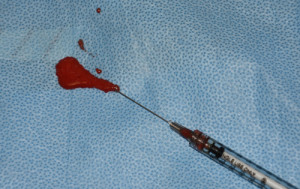Fat grafting has been around for over fifty years but has reached present day popularity due to the introduction of liposuction for harvest, droplet injection techniques and the discovery of adipose-derived stem cells. Fat injection grafting is mainly used to create more volume in the face and body for a variety of aesthetic and reconstructive conditions.
As fat injection therapies have evolved, the techniques for injections have gotten more refined using smaller injection cannulas and the placement of smaller fat particles. This is called microfat grafting and is useful for small structures like the eyelids, lips and even large wrinkles or folds. But fat grafting can be taken down to even a smaller level which has been called nanofat grafting. With this method, the fat must first be emulsifed into a pure liquid and then injected with needles or cannulas as small as 27 gauge.
While nanofat grafting is possible, what actually is in the liquid fat and how well does it work? In the October 2013 issue of Plastic and Reconstructive Surgery, the article entitled ‘Nanofat Grafting: Basic Research and Clinical Applications’ provided insights into these questions. In comparing typical lipoaspirate (macrofat), microfat and nanofat, no viable fat cells were seen in the nanograft. Nanografts had a high level of stem cells in which culturing them showed proliferation and differentiation capabilities. Nanofat grafting was performed in 67 cases of facial wrinkles, scars and dark lower eyelids. The clinical results showed good improvement in skin quality without any side effects or complications.

The location for nanofat grafting is placement into the intradermal level of the skin to improve its quality. The effects of these injections appear to take months to see. Because its effects are probably due to stem cell activity, it may not really be appropriate to call it a fat graft at all. It appears to be more of a poor man’s tissue engineered treatment that is made without expensive and time-consuming equipment. How effective it is can not be completely determined from this one paper, but the concept has merit for more widespread clinical use.
Dr. Barry Eppley
Indianapolis, Indiana


